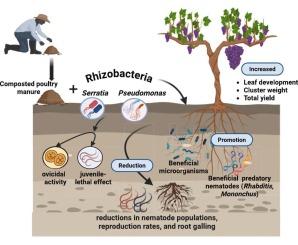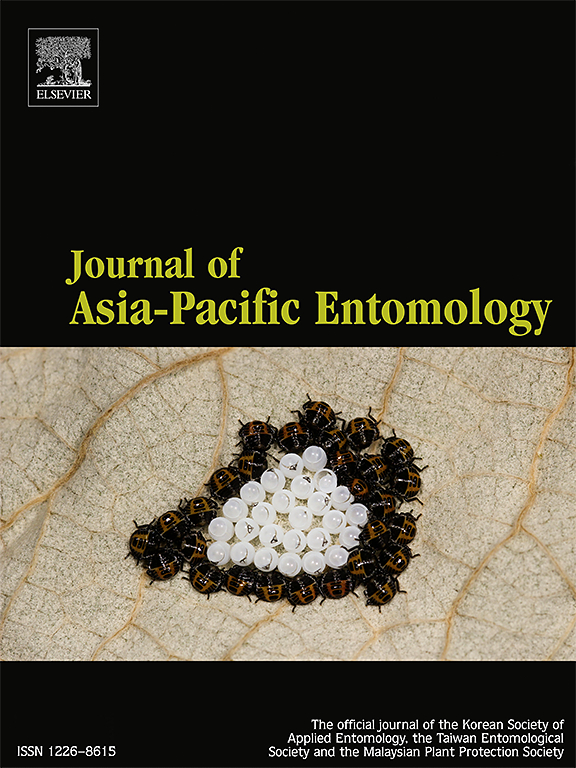Integrated bio-based approaches for suppressing root-knot nematodes and enhancing grapevine performance in sandy soils
IF 1.3
3区 农林科学
Q3 ENTOMOLOGY
引用次数: 0
Abstract
Grapevine (Vitis vinifera L. cv. Prime) cultivation in sandy soils of Egypt faces serious challenges due to infestations by root-knot nematodes (Meloidogyne incognita), which reduce yield and vine vigor. This study aimed to develop a sustainable management strategy using composted animal manures (CAMs) derived from poultry, cow, and sheep sources, along with plant growth-promoting rhizobacteria (PGPR), including Pseudomonas spp. and Serratia spp. Laboratory assays confirmed the strong nematicidal activity of both bacterial strains, demonstrating pronounced ovicidal and juvenile-lethal effects against M. incognita. While greenhouse and field trials demonstrated their efficacy in reducing nematode reproduction, root galling, and egg mass formation. Moreover, the combined application of CAMs and PGPR not only enhanced plant growth and grapevine productivity but also promoted beneficial free-living nematodes (FLNs), such as Rhabditis spp., and predatory nematodes (PNs), including Mononchus spp., contributing to improved soil health and ecological balance. These findings support the integration of organic amendments and rhizobacteria as an eco-friendly and effective alternative to synthetic nematicides in nematode-infested vineyards.

沙质土壤中抑制根结线虫和提高葡萄产量的综合生物方法
葡萄藤(Vitis vinifera L.)由于根结线虫(Meloidogyne incognita)的侵扰,埃及沙质土壤的主要栽培面临着严重的挑战,这降低了产量和葡萄活力。本研究旨在开发一种可持续的管理策略,利用来自家禽、奶牛和绵羊的堆肥动物粪便(CAMs),以及促进植物生长的根瘤菌(PGPR),包括假单胞菌和沙雷氏菌。实验室分析证实了这两种细菌菌株的强杀线虫活性,显示出对M. incognita的明显的杀卵和致死幼虫作用。而温室和田间试验证明了它们在减少线虫繁殖、根刺痛和卵团形成方面的功效。此外,CAMs和PGPR的联合应用不仅促进了植物生长和葡萄产量,而且促进了有益的自由生活线虫(FLNs),如Rhabditis spp.和掠食性线虫(PNs),包括Mononchus spp.,有助于改善土壤健康和生态平衡。这些发现支持有机改良剂和根瘤菌的结合作为一种生态友好和有效的替代合成杀线虫剂在线虫肆虐的葡萄园。
本文章由计算机程序翻译,如有差异,请以英文原文为准。
求助全文
约1分钟内获得全文
求助全文
来源期刊

Journal of Asia-pacific Entomology
Agricultural and Biological Sciences-Insect Science
CiteScore
2.70
自引率
6.70%
发文量
152
审稿时长
69 days
期刊介绍:
The journal publishes original research papers, review articles and short communications in the basic and applied area concerning insects, mites or other arthropods and nematodes of economic importance in agriculture, forestry, industry, human and animal health, and natural resource and environment management, and is the official journal of the Korean Society of Applied Entomology and the Taiwan Entomological Society.
 求助内容:
求助内容: 应助结果提醒方式:
应助结果提醒方式:


